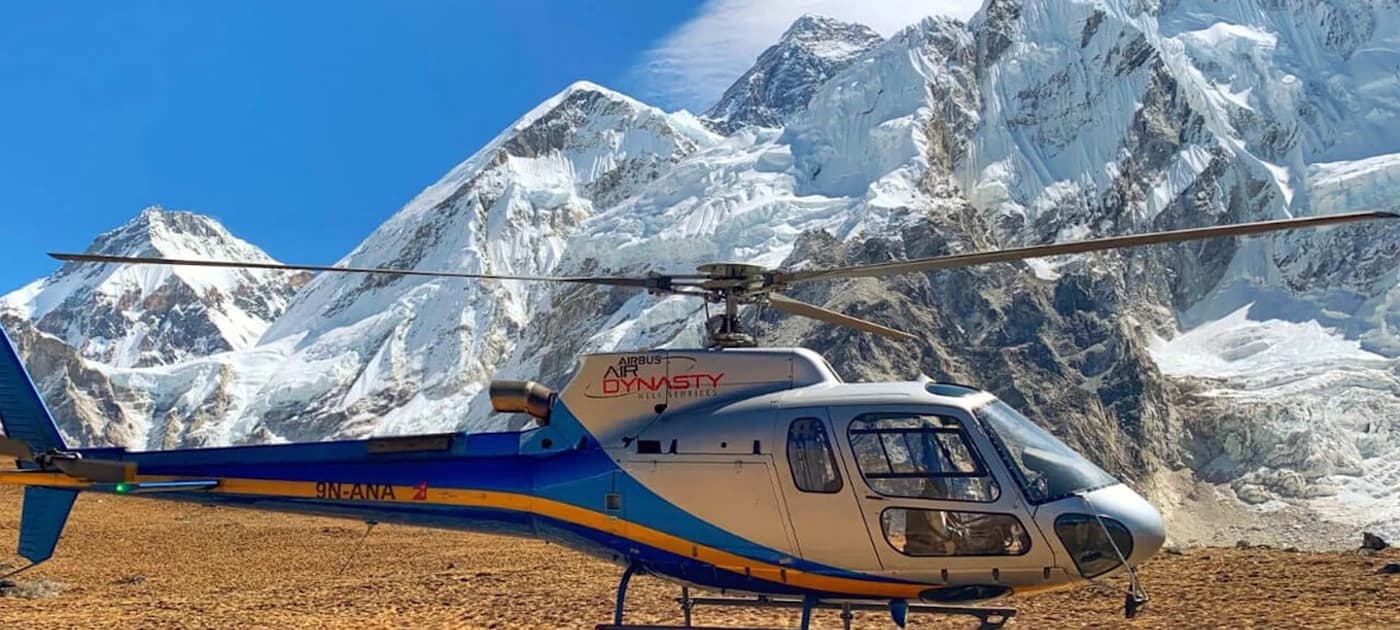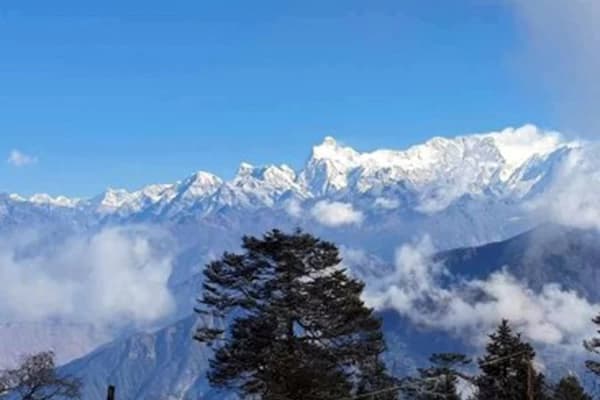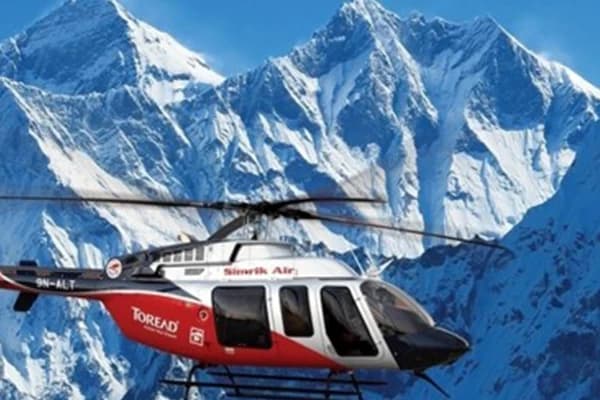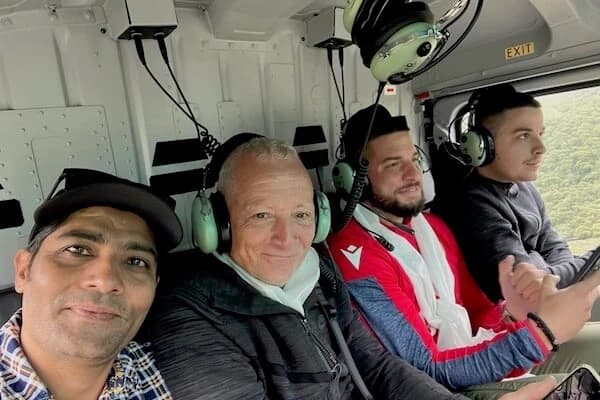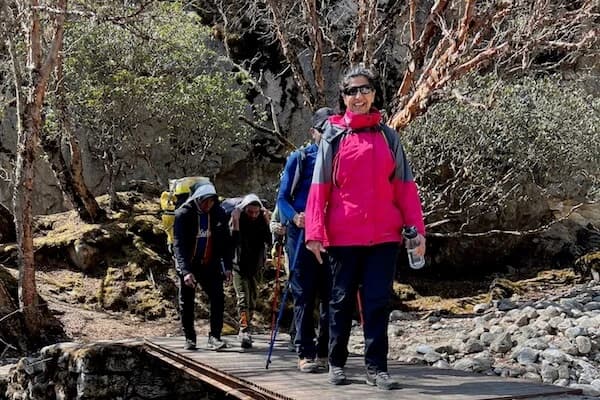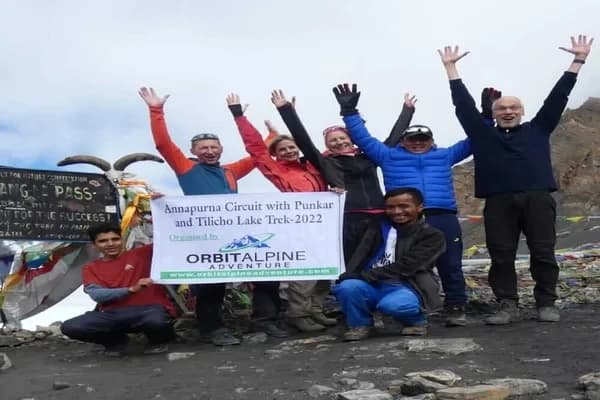The Everest Base Camp (EBC) is one of the most prominent and exclusive destinations for global explorers and trekkers. Settled at an altitude of 5,364 meters (17,598 feet), EBC assists as the entrance for walker aspirants to defeat the summit of Mount Everest, the world's uppermost peak. While the traditional trek to Everest Base Camp is a dream for many, the Everest Base Camp Helicopter Tour offers an exciting substitute for those who wish to experience the magnificence of the Himalayas without the physical challenges of a lengthy trek.
Best Time for Everest Base Camp Helicopter Tour
The helicopter tour provides an exclusive and spectacular view of the Everest region, permitting explorers to fly over royal peaks, deep valleys, and glacial rivers. It offers a once-in-a-lifetime chance to observe the striking beauty of the Khumbu region from above, capturing all-around understandings that are impossible to attain on foot. The tour classically contains a brief landing at Kala Patthar, a vantage point known for its supreme views of Mount Everest and the nearby peaks.

Selecting the ideal time for an Everest Base Camp Helicopter Tour is vital to making the most of the experience. Aspects such as weather conditions, visibility, and tourist traffic play an important role in shaping the best season for this venture. This complete guide sightseers the advantages and tasks of visiting EBC by helicopter during different times of the year, providing treasured understandings to help you plan a flawless trip. Whether you pursue clear skies, exciting sceneries, or a peaceful escape from the masses, considering the periodic differences will confirm a notable and safe journey to the roof of the globe.
Who can go to the Everest Base Camp Helicopter Tour?
The Everest Base Camp (EBC) Helicopter Tour is seamless for adventure chasers who want to experience the majesty of the Himalayas without the physical demands of a lengthy trek. This tour provides tourists with constrained time who still wish to see the wonderful beauty of Everest and its environment. It is an exceptional choice for those who may not be physically fit for high-level walking but still dream of looking at the world's uppermost peak up close.
As it provides unmatched inflight views of snow-capped mountains, glaciers, and picturesque sceneries photographers and nature enthusiasts will find this tour mainly gratifying. For families and older travelers, offering a relaxed and safe way to sightsee the Everest region is also appropriate. For anyone looking for a once-in-a-lifetime adventure with spectacular views and nominal physical effort. To extravagance travelers who wish a more special and overall, hassle-free experience.
Seasons and Weather in the Everest Region
The Everest region experiences four different seasons: spring, summer, autumn, and winter. Each time of year has its exclusive characteristics, and thoughtful ones can help you regulate the best time for your helicopter tour.
- Spring (March to May)
- Summer (June to August)
- Autumn (September to November)
- Winter (December to February)
Spring (March to May)
Spring is broadly considered one of the greatest times to board an Everest Base Camp Helicopter Tour. During this season, the Everest region comes flourishing with a mixture of auspicious weather conditions, magnificent scenery, and modest temperatures, making it a perfect time for aerial seeing the sights.
Weather Conditions
Spring in the Everest region is categorized by a steady and gentle climate. The temperatures through this time range from -6°C to 15°C (21°F to 59°F) in the sophisticated altitudes, which is quite moderate linked to the severe cold of winter or the random rain of the monsoon season. This makes it a contented time for visitors to sightsee and enjoy the magnificent sceneries without the extravagances of weather.
Visibility
Clear skies are a trademark of the spring period in the Himalayas. The crunchy and clear atmosphere allows for free views of the royal peaks, including Mount Everest, Lhotse, Nuptse, and Ama Dablam. This is vital for a helicopter tour, as the primary attraction lies in the all-around views of the world's uppermost mountains. The prominence during this season confirms that explorers can capture spectacular photographs and experience the magnificence of the Himalayas in all their beauty.
Scenic Beauty
Spring is identical with restitution and growth, and the Everest region is no exception. The lower altitudes are decorated with exciting rhododendron forests in full bloom, painting the site with shades of red, pink, and white. This colorful backdrop differences beautifully with the snow-capped peaks, creating a fascinating textile of natural beauty. The greenery and flowers add an extra layer of attraction to the already splendid scenery, making spring a visually pleasant time to visit.
Tourist Traffic
Spring is a popular period for hiking and tours in the Everest region, which means there is a higher arrival of tourists equated to other times of the year. While this can lead to more packed surroundings at popular spots, it also means that the local tourism infrastructure, including helicopter services, is functioning at full capacity. This guarantees better accessibility and consistency of flights, making it easier to plan and perform your helicopter tour without the risk of withdrawals.
Pros:
- Steady climate environments
- Vibrant skies and brilliant visibility
- Flourishing rhododendron forests
- Modest temperatures
Cons:
- A higher amount of tourists
- Possible crowding at popular spots
- Summer (June to August)
Summer in the Everest region, across from June to August, is considered by the monsoon season. This period brings an exclusive set of conditions that can both improve and encounter the experience of an Everest Base Camp Helicopter Tour. Considering these factors is important for making the maximum of a summer trip to this royal region.
Weather Conditions
The summer months in the Everest region are conquered by the monsoon, during hefty rainfall and high humidity. Temperatures during this period range from 10°C to 25°C (50°F to 77°F) at lower altitudes and can be calmer at higher altitudes. The recurrent rains can lead to slippery conditions and infrequent thunderstorms, making the climate somewhat changeable. However, the rain classically falls in the late afternoons and evenings, making the mornings moderately clearer.
Visibility
The monsoon season can present challenges with visibility due to the common cloud cover and fog. The skies are often cloudy, limiting the spectacular all-around sights that are the stamp of an Everest Base Camp Helicopter Tour. However, there are pauses in the climate when the skies clear, offering sights of the royal peaks. Timing your tour to concur with these clear spells can boost your experience, though it requires flexibility and a bit of blessing.
Scenic Beauty
One of the utmost prominent features of the Everest region in summer is the luxurious, green scenery. The monsoon rains convert the gorges and hillsides into an exciting green oasis. Waterfalls are at their most powerful and plentiful, flowing down the slopes in remarkable displays. The flora add-ons during this time, with a variation of wildflowers adding wades of color to the set. This luxurious environment differs beautifully with the rough land and snow-capped peaks, creating an exclusive and attractive scenery.

Related Blog: Everest Base Camp Helicopter Tour with Landing Experience
Tourist Traffic
Summer sees less tourists equated to the top seasons of spring and autumn. The lessened tourist traffic means less packed conditions at popular spots, providing a calmer experience. The downside, however, is that the reduced demand can lead to fewer accessible flights, and the weather-related challenges can cause delays or terminations. It is important to plan with flexibility and be ready for possible changes to your journey.
Pros:
- Luxurious green sceneries
- Less tourists
Cons:
- Hefty rainfall and gloomy skies
- Changeable weather
- Maximum chances of flight cancellations
Autumn (September to November)
Autumn, from September to November, is extensively well-thought-out and one of the best times for an Everest Base Camp Helicopter Tour. This season offers a perfect blending of steady weather, exceptional visibility, and a wonderful set, making it a major choice for explorers looking for a memorable aerial journey.
Weather Conditions
Autumn in the Everest region is considered by steady and slight weather conditions. Temperatures range from 0°C to 20°C (32°F to 68°F) at lower heights, providing a contented climate for sightseeing the Himalayas. The post-monsoon period confirms that the air is clean and crisp, free from the dust and fog that can vaguely be viewed during other seasons. Rainfall is slight, and the probability of clear, sunny days is high, making autumn a perfect period for helicopter tours.
Visibility
One of the standout features of autumn is the special visibility. The skies are classically clear, offering unhindered views of the royal Himalayan peaks, including Mount Everest, Lhotse, Nuptse, and Ama Dablam. The clearness of the air during this season provides flawless conditions for aerial photography, letting explorers capture spectacular images of the mountains and the nearby sceneries. The moistness of the atmosphere improves the visual experience, making autumn a favored period for helicopter tours.
Scenic Beauty
Autumn alters the Everest region into a remarkable graphic feast. The post-monsoon vegetation is still present, but the scenery begins to take on the warm sorts of fall. The forests and valleys are decorated with shades of gold, red, and orange, creating a striking dissimilarity against the background of snow-capped peaks. The grouping of clear skies and exciting autumn colors makes for an attractive and unforgettable experience. The tranquil beauty of the mountains during this season is supreme, providing a faultless setting for an Everest Base Camp Helicopter Tour.
Tourist Traffic
Autumn is a crowning season for tourism in the Everest region, fascinating a large number of visitors. While this means that famous spots can be more packed, it also confirms that the local tourism set-up is fully active. The high demand for helicopter tours throughout this period means that flights are regular and consistent, lessening the risk of cancellations and confirming an even travel experience. It is sensible to book your tour in advance to protect a spot and evade any last-minute troublesomeness.
Pros:
- Steady climate conditions
- Vibrant skies and outstanding visibility
- Gentle temperatures
- Clean and crusty air
Cons:
- The higher figure of travelers
- Likely overcrowding at famous spots
Winter (December to February)
Winter, across from December to February, offers an exclusive and peaceful experience for an Everest Base Camp Helicopter Tour. This period is patent by cold temperatures, clear skies, and fewer tourists, providing a peaceful and attractive setting for those keen to brave the freezing weather.
Weather Conditions
Winter in the Everest region is considered cold and dry. Temperatures can drop knowingly, particularly at advanced altitudes, reaching from -15°C to 5°C (5°F to 41°F). Despite the cold, the weather is normally steady, with minimal rainfall. Snowfall is common at higher raises, adding an additional layer of snow to the scenery and attracting the region's beauty. The cold weather requires warm clothing and homework, but it also means crunchy, clear air.
Visibility
Winter bids some of the vibrant skies of the year in the Everest region. The cold air lessens humidity and atmospheric fog, providing excellent prominence. The free sights of the Himalayan mountains, including Mount Everest, are spectacular, making winter a great time for aerial photography and seeing the sights. The snow-capped mountains stand out hard against the clear blue sky, creating wonderful views that are flawless for capturing unforgettable pictures.
Scenic Beauty
The winter scenery of the Everest region is extremely attractive. The fresh snowfall blankets the mountains, gorges, and forests, generating an original and magical winter heaven. The difference between the white snow and the deep blue skies is prominent, offering an exceptional and beautiful view of the Himalayas. The peaceful and calm environment, free from the hustle and bustle of peak tourist times, improves the inclusive experience, providing a peaceful escape into nature.

Tourist Traffic
Winter sees an important drop in the number of tourists who go to see the Everest region. This lessening in tourist traffic means that widespread spots are less crowded, leading to a more warm and quiet experience. The downside is that the reduced demand can lead to fewer accessible flights, and the cold weather can pose challenges. However, the calmness and beauty of the winter season more than recompense for these possible drawbacks. The silent atmosphere permits for a more personal linking with the royal scenery.
Pros:
- Vibrant skies and exceptional visibility
- Rarer tourists
- Calm and soothing environment
Cons:
- Cold temperatures
- Conceivable snow and ice on landing sites
- Restricted daylight hours
You may Like:Ultimate Guide to Choose Everest Base Camp Helicopter Tour
Factors to Consider When Choosing the Best Time
When scheduling your Everest Base Camp Helicopter Tour, numerous factors should be taken into account to confirm a successful and extraordinary experience.
- Weather Conditions
- Visibility
- Tourist Traffic
- Flight Availability and Safety
- Personal Preferences
- Weather Conditions
Weather is the most central factor to consider. Vibrant skies and constant weather conditions are important for a safe and pleasing helicopter tour. Spring and autumn are known for their auspicious weather, while summer and winter can be more stimulating due to rain and cold temperatures, correspondingly.
Visibility
Ideal visibility is important for experiencing the wonderful views of the Himalayas. Vibrant skies let for free views of Mount Everest and the nearby peaks. Spring and autumn offer the finest visibility, while summer's monsoon clouds and winter's infrequent fog can hamper the views.
Tourist Traffic
The sum of tourists can influence your experience. Spring and autumn are crowning seasons, appealing to more visitors. If you desire a quieter experience, consider going to see it during the winter when visitor numbers are lesser.
Flight Availability and Safety
The accessibility of flights and safety considerations are supreme. Helicopter tours are more common and consistent during the peak seasons of spring and autumn. In dissimilarity, the monsoon season (summer) may result in flight withdrawals due to poor weather circumstances.
Personal Preferences
Your personal preferences and significance play an important role in selecting the superlative time. If you enjoy exciting sceneries and flourishing flowers, spring is perfect. For those who prefer crunchy air and fewer crowds, winter may be more pleasing.
Some of the Alternative Treks are:
Everest Base Camp Trek with Helicopter Return
Detailed Monthly Breakdown
To provide a more complete understanding, let's break down the months within each season and best part their exact features.
January
- Top of the winter period
- The coolest month with chilly temperatures
- Vibrant skies and free views
- Lesser visitor traffic
February
- End of the winter period
- Slowly warming of temperatures
- Vibrant skies and good prominence
- Rarer travelers equated to spring
March
- Starting of spring with progressively warming temperatures
- Vibrant skies and brilliant prominence
- Rarer holidaymakers equated to April and May
April
- Crowning of the spring season
- Warm and steady weather
- Flourishing rhododendrons
- More number of travelers
May
- The culmination of the spring season
- Warmer temperatures, specially at lower heights
- Vibrant skies and good prominence
- Steady increase in humidity
June
- Beginning of the monsoon period
- Growing rainfall and cloud cover
- Luxurious green sceneries
- Less visitors
July
- Top of the monsoon period
- Hefty rainfall and partial visibility
- Risk of flight withdrawals
- Less travelers
August
- End of the monsoon time
- Slow decrease in rainfall
- Luxurious green sceneries
- Rarer sightseers
September
- Starting of the autumn period
- Vibrant skies and steady climate
- Mild temperatures
- Growing number of travelers
October
- Topmost of the autumn time
- Brilliant visibility and gentle temperatures
- Fresh and crunchy air
- Maximum number of vacationers
November
- The culmination of the autumn period
- Progressively cooling temperatures
- Vibrant skies and good prominence
- Lessening the number of travelers
December
- Starting of the wintertime
- Cold temperatures, particularly at higher elevations
- Vibrant skies and brilliant visibility
- Fewer visitors
Conclusion of Everest Base Camp Helicopter Tour
The ideal time for an Everest Base Camp Helicopter Tour relies on numerous factors, including climate conditions, prominence, visitor traffic, and personal liking. Spring (March to May) and autumn (September to November) are broadly viewed as the best seasons due to their steady weather, vibrant skies, and admirable visibility. However, each time of year has its exceptional appeal, and explorers can choose based on their importance.
Spring offers flourishing rhododendrons and modest temperatures, while autumn provides crispy air and fabulous mountain sights. Winter is supreme for those in quest of a calm and peaceful experience with fewer visitors, though it requires homework for cold weather. Summer, with its luxurious sceneries, can be a choice for those eager to cross the tests of the monsoon season.
If the weather gets bad on the top of the base camp, or you got short of the time, or you got health problem, then the best option for you is Everest Base Camp Trek Return By Helicopter. This is perfect for those who want to save their time, seek for luxury travel etc.
Eventually, the Everest Base Camp Helicopter Tour is a once-in-a-lifetime experience that promises cherished memories and magnificent views. By sensibly seeing the factors outlined in this guide, you can pick the best time for your venture and make the maximum of your trip to the roof of the world.
FAQs of Everest Base Camp Helicopter Tour
1. When is the best time to take an EBC helicopter tour?
The ideal time for an EBC helicopter tour is generally during the pre-monsoon (March to May) and post-monsoon (September to November) times. These periods offer the vibrant weather and the best visibility for observing the massifs.
2. Why are March to May and September to November considered the best times?
The climate is steadier, with less chance of heavy snow or rain, which confirms clearer skies and better visibility of Everest and the nearby peaks. The temperature is also more sensible, making for a more relaxed experience.
3. Can I take a helicopter tour during the winter or summer?
There could be regular rain and cloud cover, dropping visibility and making the flights less expectable. Winter (December to February) can be quite cold and may have heftier snow, possibly affecting flight schedules and visibility. Summer (June to August) is the rainy season in Nepal.
4. Are there any specific weather conditions that can affect the tour?
Pilots are skilled in evaluating weather conditions and will reschedule the tour if the climate is not appropriate for safe flying. Yes, strong winds, heavy snow, and rain can influence the helicopter tour.
5. How long does the helicopter tour to Everest Base Camp take?
The flight from Kathmandu to EBC, a brief stop at EBC, and the return flight. Some tours may offer extra stops or lengthy time at EBC. The tour classically takes around 3 to 4 hours.
6. What should I wear for the helicopter tour?
However, you’ll be in a helicopter, the temperature can be quite chilly at Everest Base Camp. Dress in layers, with a warm jacket, gloves, and a hat, as it can be cold at higher raises.
7. Is the helicopter tour affected by altitude?
This trip is made to minimize periods spent at high heights, dropping the risk of height sickness. While the helicopter itself can handle the elevation, passengers might experience some mild effects due to the thin air.
8. Do I need to make reservations in advance?
Especially if you’re roaming during the peak seasons, to protect your favorite date and time. It is sensible to book your helicopter tour in advance.
